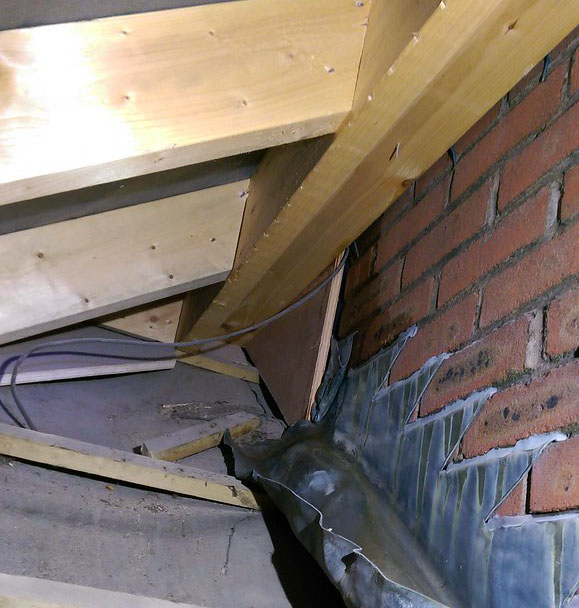Affordable Roof Leak Repair - Quick and Reliable Solutions
Wiki Article
The Ultimate Overview to Addressing Roof Covering Leakages and Stopping Additional Damages

Typical Root Causes Of Roof Leaks
Roof leaks can happen as a result of various elements, such as damaged tiles, improper setup, or stopped up seamless gutters. Harmed shingles, typically triggered by extreme weather condition conditions or normal wear and tear gradually, can produce openings for water to permeate with. Inappropriate installment of roof covering products, including flashing and underlayment, can also bring about leaks as gaps or incorrect placement can endanger the roof's ability to ward off water properly. Additionally, clogged gutters can prevent proper water drainage, creating water to swimming pool on the roof and eventually locate its means right into the home.
Additionally, leakages might result from broken smokeshaft blinking, skylights, or vents that have worn away gradually. These weak spots on the roof can permit water to penetrate if not effectively preserved or sealed. One more common reason for roof covering leaks is the visibility of ice dams, which develop when snow melts and refreezes at the roof's side, creating an obstacle that stops proper drain. Understanding these typical sources of roofing leakages is essential for effective repairing and avoidance methods.
Identifying the Resource of Leakages
When faced with roofing leakages, determining the exact source is vital to efficiently attend to the concern and prevent additional damage. Determining the resource of a roofing system leakage can be challenging as water can go into the roofing in one area and traveling prior to trickling through the ceiling in one more. To figure out the resource of the leakage, beginning by examining the interior of the building. Look for water stains, mold development, or dampness on the ceiling or wall surfaces as these are indications of a leakage over. Next, examine the attic for signs of water intrusion such as wet insulation, mold, or water stains on the rafters. When you have determined the general area of the leakage, inspect the roof surface for missing roof shingles, split flashing, or damaged seals around chimneys and vents. Additionally, look for any kind of signs of merging water or particles that might be triggering water to seep under the roofing product. By meticulously investigating these locations, you can determine the precise source of the leak and take ideal actions to repair it immediately.Do It Yourself Repair Service Techniques
Upon recognizing the source of a roof leak, implementing efficient DIY fixing techniques is critical to immediately resolve the issue and stop further damage. One of one of the most usual DIY repair work techniques for roofing system leakages is patching the damaged area with roof concrete. This approach involves cleaning up the location around the leakage, applying a generous quantity of roof covering cement to the broken location, and pressing a piece of roof textile or patching product right into the cement to produce a water resistant seal.Roof sealer can be used along joints, around blinking, and over little holes to prevent water from seeping right into the roofing structure. Additionally, replacing damaged or missing tiles can additionally successfully repair roof leakages.
Hiring Professional Assistance
Involving the solutions of skilled roof professionals can offer skilled solutions you can try here for dealing with roofing leakages and making certain comprehensive fixings. Roofing experts are skilled in market finest methods and view it now security procedures, making sure that the repair work is brought out effectively and without jeopardizing the structural integrity of the roofing system.When choosing a roofer, make sure to research their qualifications, experience, and track record in the sector. Seek specialists who are licensed, insured, and deal service warranties on their job to ensure high quality and assurance. By entrusting your roof repair work needs to proficient experts, you can rest assured that the work will certainly be done right the very first time, saving you time, money, and prospective frustrations down the roadway.
Preventative Maintenance Tips
To ensure the long life and durability of your roofing system, carrying out proactive maintenance techniques is necessary adhering to the conclusion of specialist fixings by experienced roof experts. Trim any type of overhanging branches to stop them from creating damages to your roof covering during tornados or strong winds. By complying with these preventative maintenance tips, you can prolong the life of your roof and prevent expensive fixings in the future - fix roof leak.
Conclusion
In conclusion, resolving roofing system leakages promptly is vital to avoid additional damages to your home. Additionally, carrying out preventative maintenance suggestions can aid to avoid future leakages and keep the integrity of your roofing.Incorrect installment of roofing materials, including flashing and underlayment, can additionally lead to leakages as gaps or inaccurate positioning can endanger the roofing system's capability to drive away water properly. An additional usual cause of roofing system leakages is the visibility of ice dams, which create when snow melts and refreezes at the roofing system's edge, producing an obstacle that prevents proper drainage. Determining the source of a roofing leakage can be tough as water can get in the roof in one location and travel before dripping with the ceiling in one more.Upon determining the resource of a roofing leakage, carrying out reliable Do it yourself fixing strategies is critical to promptly resolve the concern and protect against see more damages. Roof covering sealer can be used along seams, around flashing, and over small openings to protect against water from leaking right into the roofing structure.
Report this wiki page